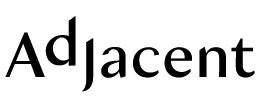Issue 11: Sweat
A Letter on Sweat

We once knew sweat as the primary by-product of exertion. Today, our exertion takes many forms, not all of which are evidenced so texturally or odorously, but all of which are implicated in some way with capital production. Late-stage capitalism has alienated, abstracted, and complicated what labor looks like. We barely even recognize when we’re performing labor anymore. As we thumb-stroke the “free” hours of the day away, we may not be perspiring, but we are slowly amassing value for the given platform. What do we call the creation of value, if not work?
Last fall, we issued an open call for works pertaining to labor. We saw, resoundingly, that the submissions concerned types of labor that do not connote effort in that traditional, damp way. Technologically-mediated labor, specifically, produces a gamut of effects. It can spawn a never ending chain of incremental updates which go little-appreciated in the age of moving fast and breaking things, as noted by Roopa Vasudevan. Though the work of regular maintenance is virtuous by nature of its necessity, M warns that it is “inescapably wrapped in the logic of profit” when done in service of Big Tech. Even for an end user like Zoe Cohen, who recounts relying on technology to alleviate the extra work demanded by a disability, tech products created new demands as much as they resolved others.
Meanwhile, Tiger Dingsun and Elisabeth Schifrin reveal that enjoyers of screen-mediated media partake in a sneakier form of labor—one that can exploit or ameliorate their affective state. Continuing in the realm of the lesser known, Amad Ansari points to slippery Internet features that siphon cognitive power from visitors. Kat Kitay pushes the dynamic to the very edge by proclaiming the human tech consumer as not a laborer but the very means of production himself.
As a salve for these rather abysmal reflections, we might look to Adina Glickstein’s piece, which regards the indulgent practice of internet “rotting” as a rebellion against the tyranny of productivity. Similarly, Rachel Lau recommends that we defy our interminable to-do lists by doing nothing at all, in what Lau deems “liberatory refusal.” Then again, perhaps we should take a note from Lisha Nie’s contagious rendition of Marie Davidson’s song, “Work It,” and dance away the heavy implications of our value production. After all, we humans are not the only producing beings in this vast ecosystem, as Yindi Chen and Yan Shao remind us; the photosynthetic creatures have their own sensuousness, specificity, and creativity for us to find out.
Issue 11: Sweat was born from the briny residue that traces the body’s activity, long after it has ceased to be present. The issue comes at the close of the hottest summer in recorded history (says NASA) and predates Charli XCX’s homonymous tour thankyouverymuch. More importantly, this issue is an accentuation of our shifting labor conditions under technofascism and capitalism, however immaterial they may seem.
In the spirit of making our labor as explicit as sweat, we share the following details. Throughout the course of two school semesters, our editing team met once a week on average, with each editor working independently to edit the submissions and manage our social media, website, and communications. For an entire year’s worth of work, the leading student editors and the graphic designer were awarded $600 USD, while the junior editors were awarded $400 USD, pretax. Each contributor was promised $150.00 USD for their published piece. (At the time of writing this letter, the editor’s team is still in the process of getting the payment to our contributors.)
This issue is particularly special to us because it arrives in a newly-fashioned form. As you may or may not have noticed, our previous issues were each published on a bespoke website. This year, we retired this tradition and created a new website for the last time. The site you visit today is designed to house issues to come. We arrived at this decision because, frankly, we were exhausted by the ritual of creating a new site every year. Ironically, this new site ended up inflating our workload beyond the average year’s, but we did it knowing we were reducing the workload for Adjacent’s posterity.
On that note, we extend our thanks to Nancy Hechinger for her direction on this issue, as well as Daniel Tsadok, Lenin Compres, Scott Broussard, and Sixin Chen for their work on our new website, and acknowledge all the sweat—be it literal or figurative—that helped Adjacent arrive anew.
